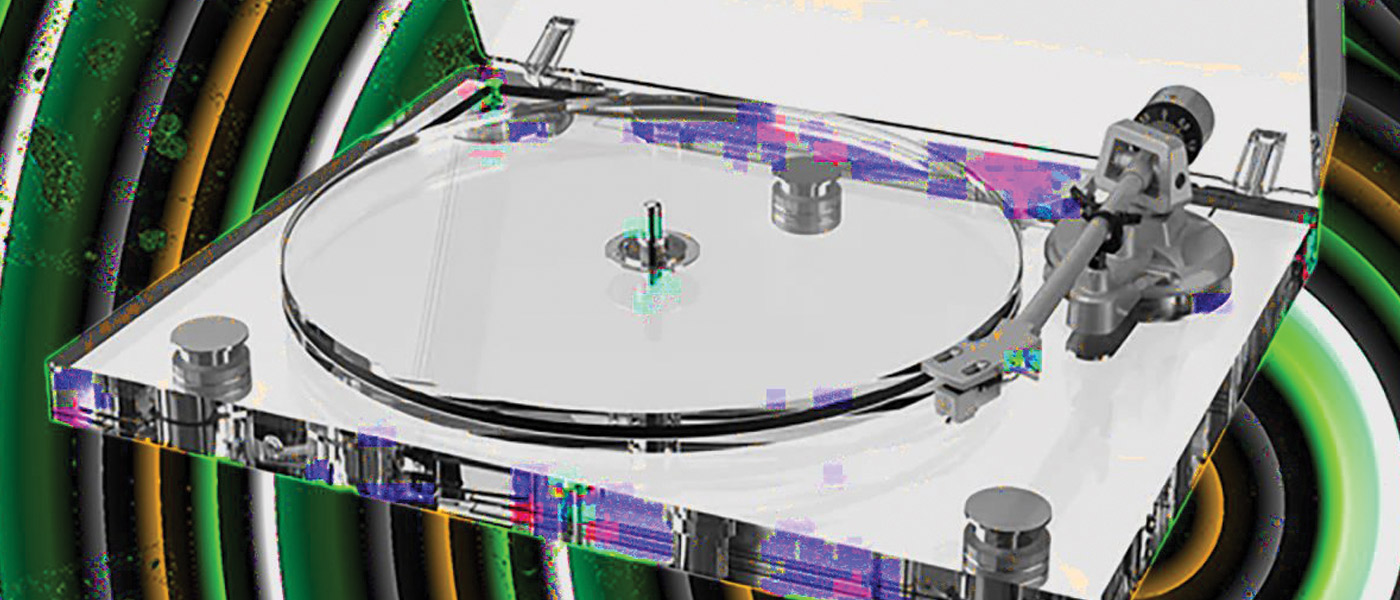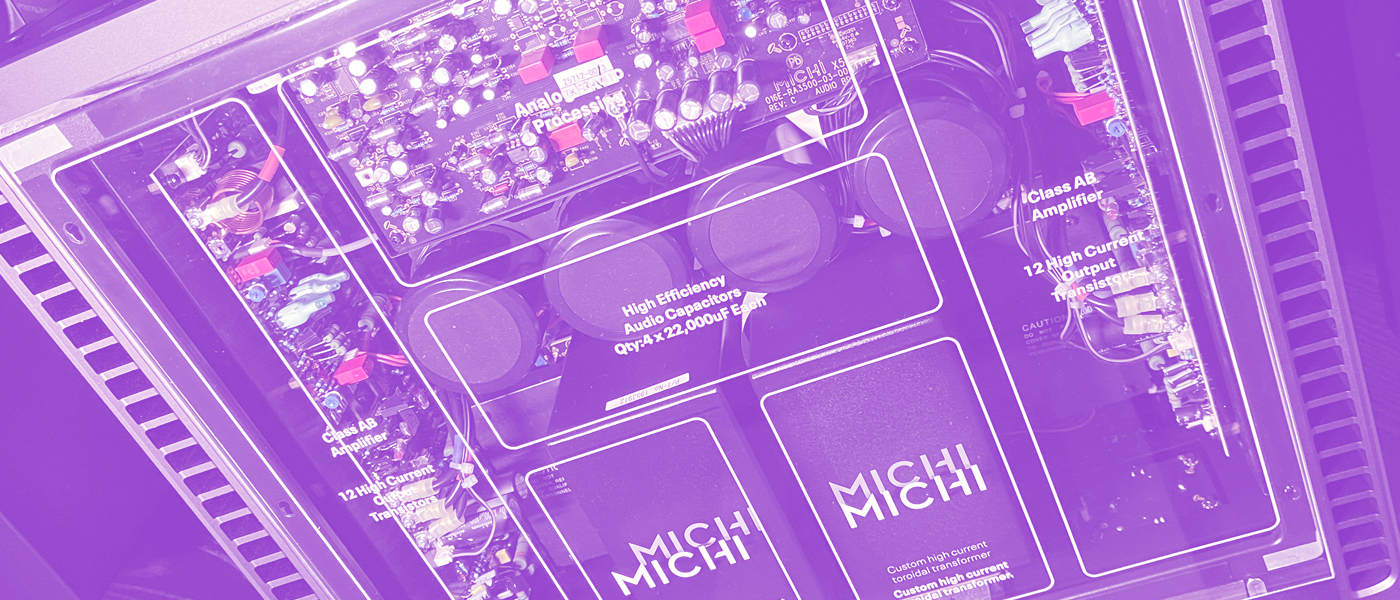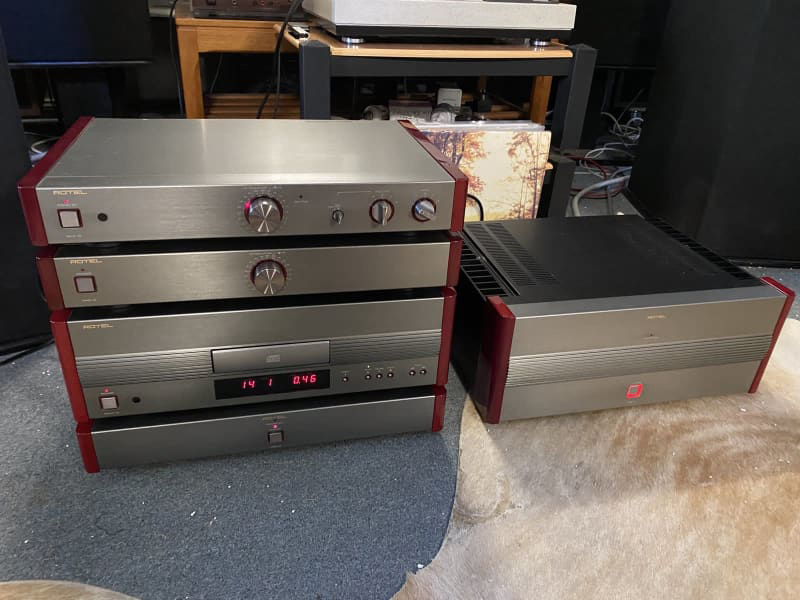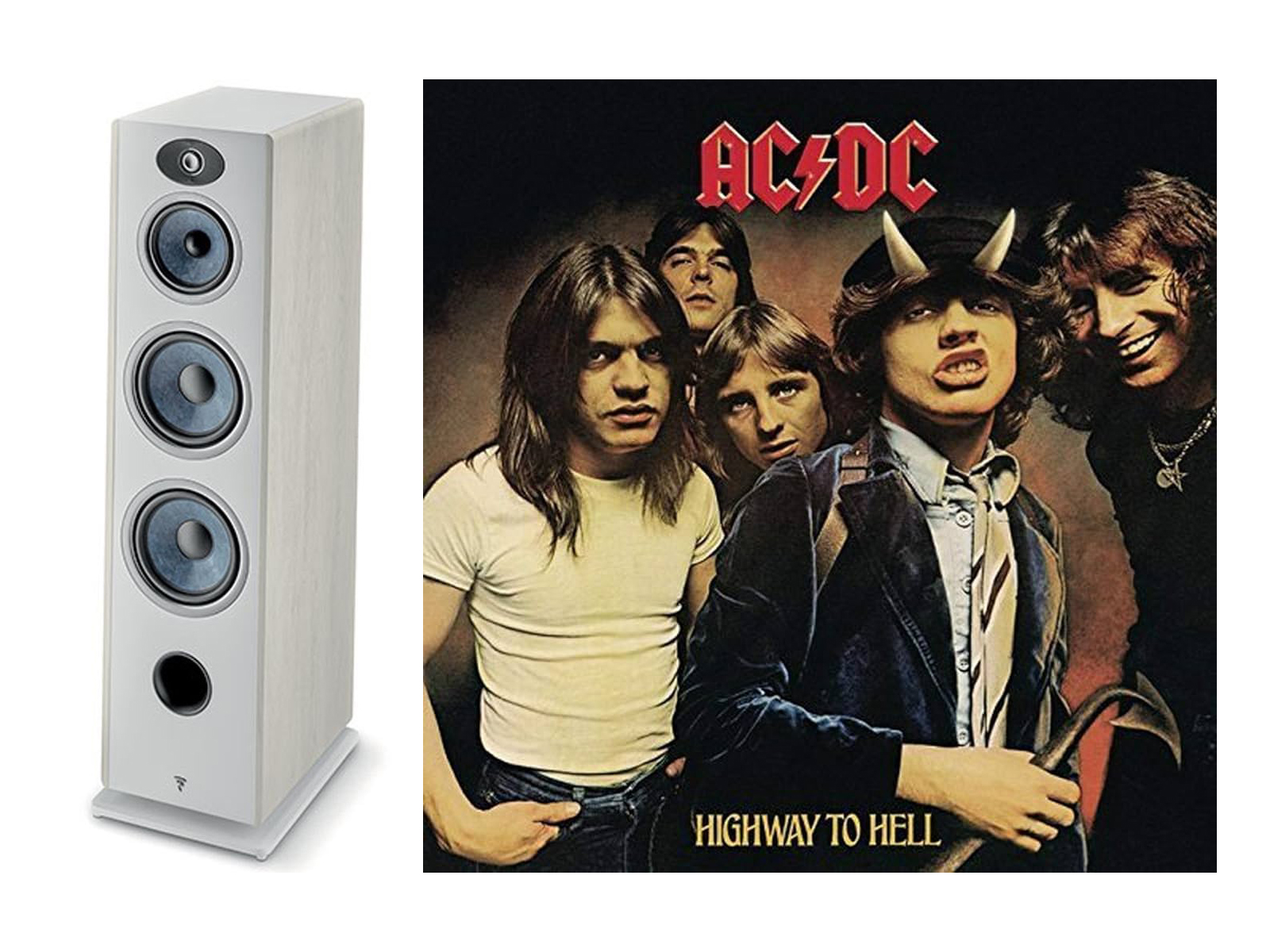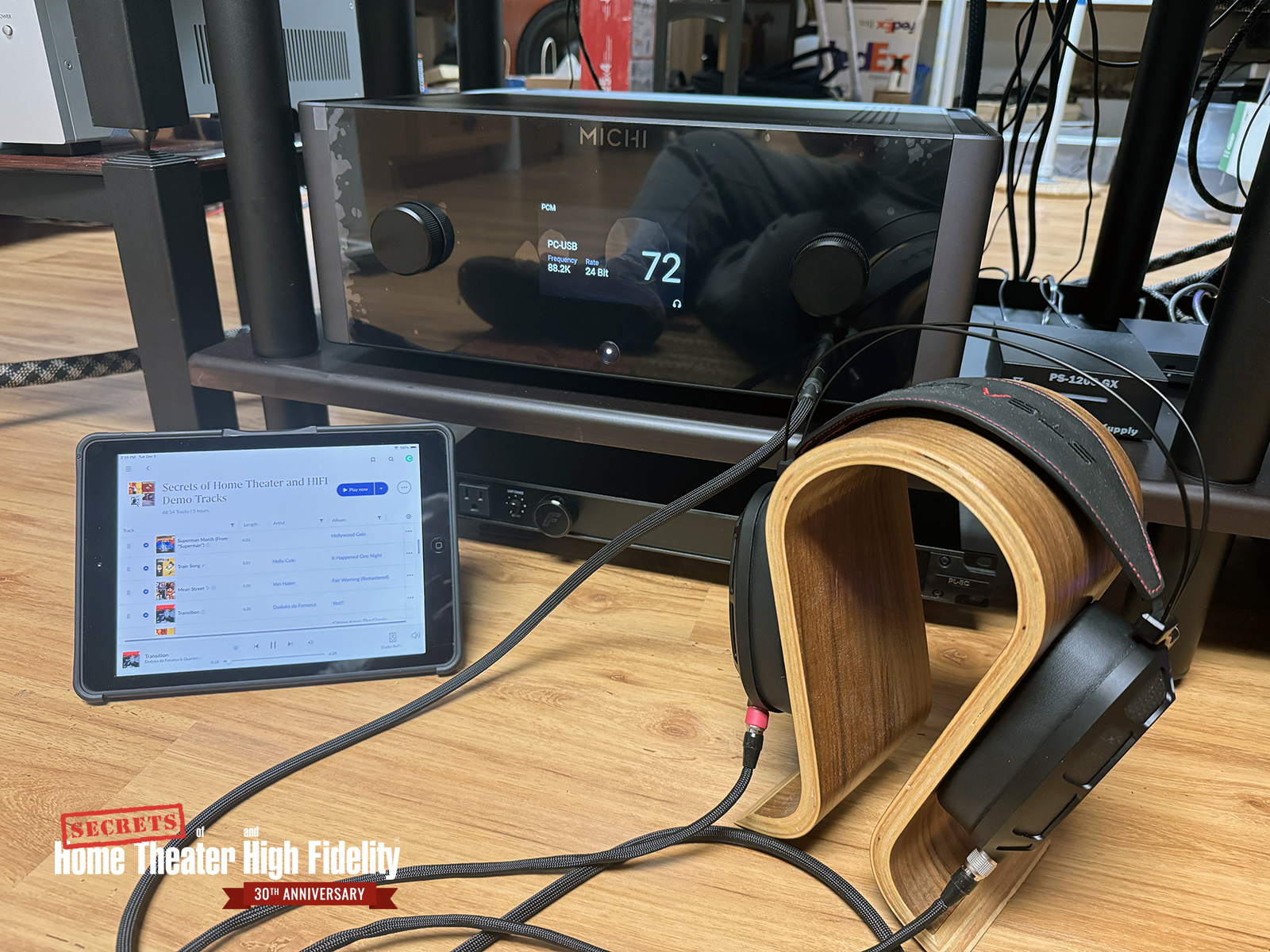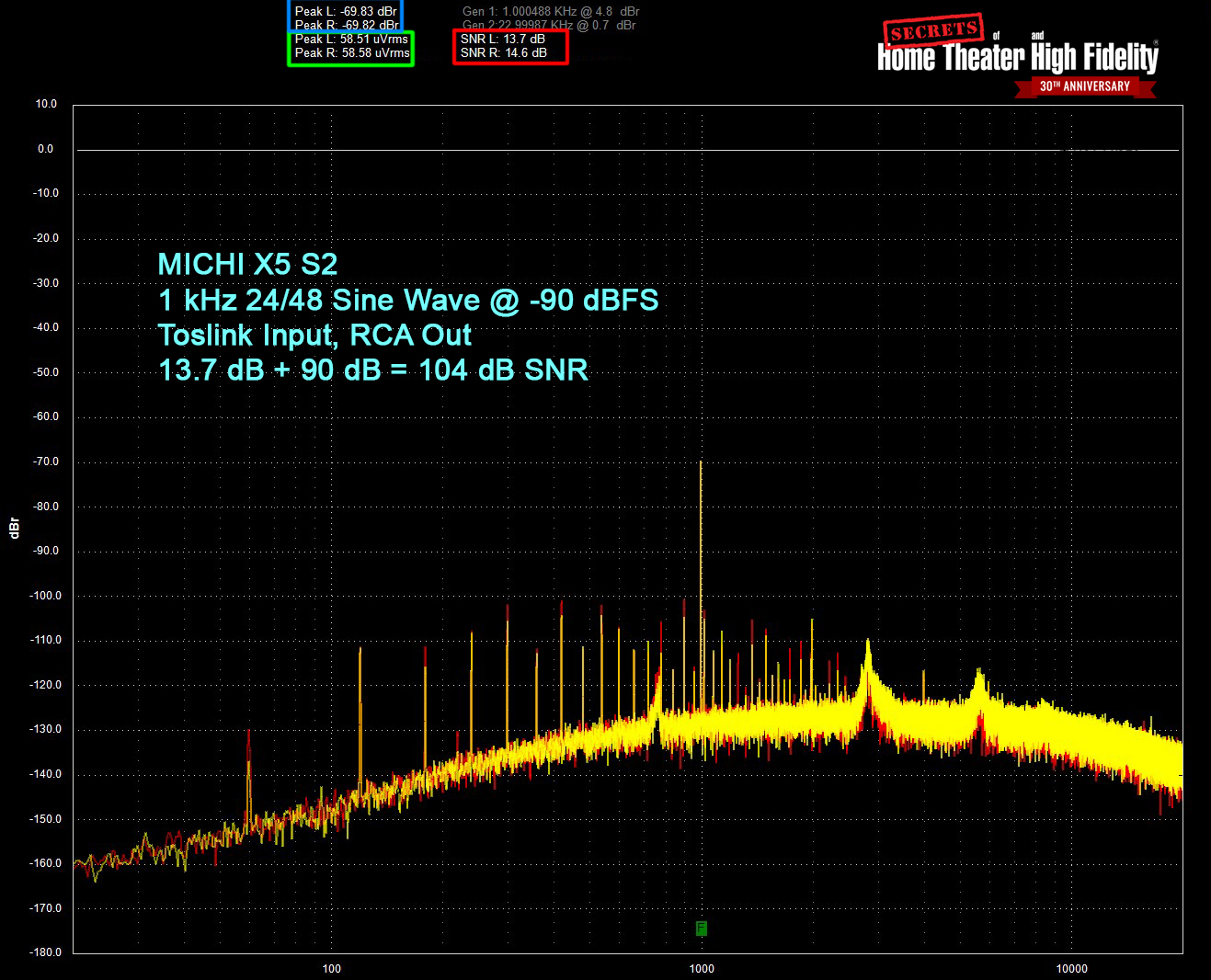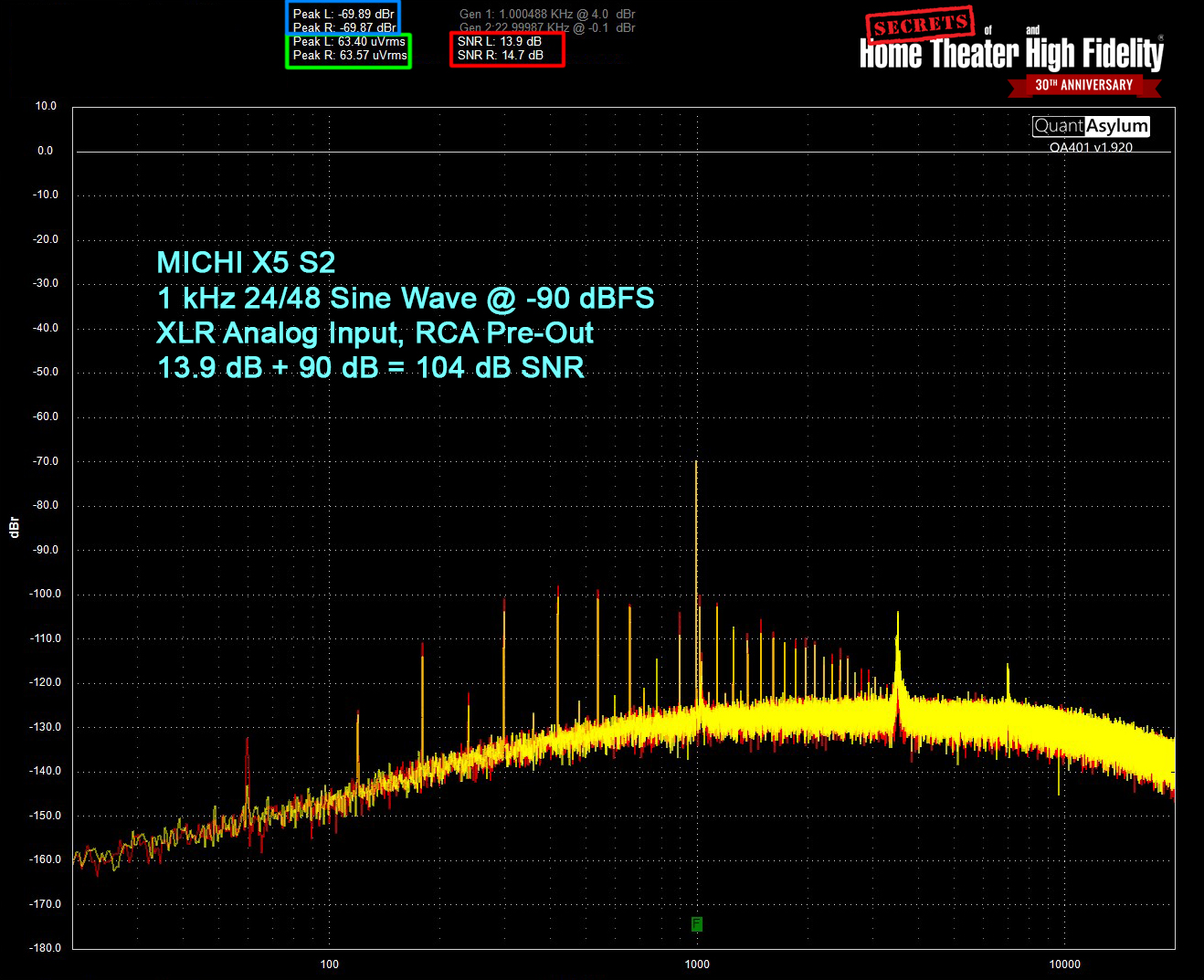If you are looking for an integrated amplifier that is non-plus-ultra, an almost all-in-one, that can sneer at any speaker load and looks fantastic while doing it, make sure your health insurance is up to date and take a good hard look at the MICHI X5 Series 2. It’s not an inexpensive component to be sure, but given its power and control capabilities, I could easily see this integrated amp being someone’s last or only purchase for the center of their system. Weighing in just shy of 100 pounds and with a power output of 350 watts/channel into 8 Ohms (and 600 watts/channel into 4 Ohms), it is the proverbial iron fist in a velvet glove.
Rotel MICHI X5 Series 2 Integrated Amplifier Highlights
- Exceptional build quality commensurate with the MICHI name.
- An almost absurd amount of power in a single component.
- One of the quietest and nicest sounding on-board phono stages I have encountered.
- The X5 maintained an excellent grip over every speaker I paired it with.
- Probably more digital and analog inputs than one could ever need.
- Dual mono subwoofer outputs.
- Roon Certified (Yay!), MQA compatible (“Whatevs…”).
- Would have liked a setting to disable the amplifier section when using pre-outs.
- A pair of balanced pre-outs would have been ideal.
Okay, so almost anyone who is into audio on even the most basic level should be familiar with the Rotel brand. A still family-owned Japanese audio company that has now been in business for 63 years, Rotel’s hallmark has always been in creating a higher-quality product with a longer life cycle than is the norm. I speak from personal experience on this as I own a Rotel RQ-970BX phono preamp, in mint condition, that still performs (and measures) flawlessly. As a matter of fact, I use it in my phono cartridge testing bed because its RIAA playback is so accurate, and its distortion is very low.
What you might not know is that in 1991 Rotel created an exclusive high-end sub-brand called MICHI. The original purpose of MICHI was to be an all-out assault on the domestic Japanese high-end audio market. The overall engineering quality and attention to detail of these components soon found favor in export markets, and a complete line of seven components was produced and sold until the MICHI brand was discontinued in 1997. I’ve seen a few rare examples of the RHQ-10 phono preamplifier and the RHA-10 active preamplifier, with their distinctive redwood side panels, show up on the used market, and looking at photos of the internals one can see the quality and superior craftsmanship that was involved in producing this gear at the time.
Fast forward to 2019 and Rotel saw fit to revive the MICHI brand under the auspices of Rotel’s Chief Technical Officer Daren Orth. If the original MICHI products of the 1990s were an all-out assault on the high-end market, then this first wave of newly introduced MICHI products looked like an audio invasion! These modern MICHI audio products are massively overbuilt and consist of the original X3 and X5 integrated amplifiers, the P5 preamplifier, the S5 stereo power amplifier, and the M8 monoblock power amplifier. All have a thoroughly minimalist, up-to-date design aesthetic and the same, almost fanatical attention to detail that makes up the core of the MICHI ethos.
Jump to 2023 and supply chain issues along with the fire at the AKM chip fab in Japan created the need for a technical refresh for the integrated amps and preamp. This also gave the engineering team a chance to improve some of the performance parameters of the products while they were at it. Back in 2021our Editor Emeritus, John Johnson, gave the first edition of the MICHI X5 integrated amp a thorough flogging and found it to be an impressive performer all around. Will the new X5 S2 show any significant changes or improvements? Let’s find out, shall we?
CONTINUOUS POWER OUTPUT (Manufacturer):
350 Watts per channel into 8-Ohms, 20Hz – 20kHz at a THD of 0.2%
600 Watts per channel into 4-Ohms, 20Hz – 20kHz at a THD of 0.2%
FREQUENCY RESPONSE (Manufacturer):
Line Level Inputs: 10 Hz – 100 kHz (+0 dB, -0.6 dB)
Digital Inputs: 20 Hz – 20 kHz (0 ± 0.4 dB)
Phono Input: 20 Hz – 20k Hz (+0 dB, -0.2 dB)
TOTAL HARMONIC DISTORTION (THD):
<0.009%
S/N RATIO (IHF “A” Weighted):
Line Level Inputs: 102 dB
Digital Inputs: 102 dB
Phono Input: 80 dB
INTERMODULATION DISTORTION (60 Hz:7 kHz, 4:1):
<0.03%
DAMPING FACTOR (20 Hz – 20 kHz, 8 Ohms):
350
CHANNEL SEPARATION:
>65 dB
INPUT SENSITIVITY:
Line Level Inputs (RCA): 380 mV
Line Level Inputs (XLR): 580 mV
Phono Input (MM): 5.7 mV
Phono Input (MC): 570 uV
INPUT IMPEDANCE:
Line Level Inputs (RCA): 100 kΩ
Line Level Inputs (XLR): 100 kΩ
Digital Inputs: 75Ω
Phono Input (MM): 47 kΩ
Phono Input (MC): 100 Ω
INPUT Maximum:
Line Level Inputs (RCA): 12.5 V
Line Level Inputs (XLR): 12.5 V
Phono Input (MM): 197 mV
Phono Input (MC): 19 mV
PRE-OUT LEVEL:
1V
OUTPUT IMPEDANCE:
470 Ω
TONE CONTROLS:
±10 dB at 100 Hz / 10 kHz
COAX/OPTICAL DIGITAL INPUT SIGNALS:
SPDIF LPCM (Up to 24-bit/192 kHz)
PC-USB:
USB Audio Class 1 (up to 24/96 kHz)
USB Audio Class 2 (up to 32/384 kHz)
MQA, DSD, and DoP support
DIMENSIONS (W × H × D):
19” x 7 5/8′′ x 17 3/4′′
485 x 195 x 452 mm
FRONT PANEL HEIGHT:
132 mm (5 1/4′′)
POWER REQUIREMENTS:
120 V, 60 Hz
POWER CONSUMPTION:
850 W
STANDBY POWER CONSUMPTION:
<0.5 W
NET WEIGHT:
96.56 lbs. (43.8 kg)
MSRP:
$7,999.00
Company:
SECRETS Tags:
Rotel, MICHI, MICHI X5 S2, MICHI X5 S2 Integrated Amplifier, Integrated amplifier, amplifier review, review 2024
Secrets Sponsor
With additional Analysis by David A. Rich
If you have had a chance to read our Editor Emeritus John Johnson’s review of the first-generation MICHI X5 Integrated Amplifier, you’ll know that its performance and capabilities were generous, making it a tough act to follow. You could very well be forgiven for mistaking the X5 S2 for the original X5 because, to the naked eye, they appear essentially identical.
Even down to the rear panel connections and elegant slender remote, both units look like visual clones. Personally, I’m not complaining. The original X5s elegant simplicity of design needed no further modification or additional embellishment to my eye. I love the look and tactile feel of the integrated side heat sinks. The uncluttered front display is a paragon of clarity and efficiency, and I was pleasantly surprised at how quickly and logically I could navigate the menus using the equally uncluttered remote control.
David Rich notes: Highlighted in the above image is the Intertek ETL Certification Marking. The fine print indicates that this 3rd party testing organization, Intertek, has tested this design to pass UL safety standards. This is an exceptionally rare feature in the realm of low-volume, high-end audio equipment, making this unit a truly exclusive find. Do not confuse this with an EU CE mark. In UL testing, the unit to be certified must be submitted for testing to an organization like Intertek’s ETL. Paperwork from the manufacturer saying they verified the unit is safe internally will not cut it to obtain the ETL stamp.
While audiophiles consider the functionality and sound of a component when they purchase one, the presence of third-party safety certification should also be an important factor in the selection. Especially when one is spending this amount of money.
As mentioned, the X5 S2 has the identical number and types of inputs and outputs as the original X5 so I won’t belabor repeating the spec sheet. What is of note is the PC-USB input, which allows the selection of either PCM-only decoding (up to 32-bit) or DSD/MQA/PCM (24-bit) via a menu selection, is certified Roon Tested. The twin mono subwoofer outputs allow the connection of two powered subwoofers. There are no bass management resources in the MICHI X5 S2 so you would need to set the crossover or low pass filter at the individual subs to integrate them where the natural low-end roll-off of your main speakers is. The AAC and aptX HD Bluetooth receiving capability from the previous generation carries over. The X5 S2 has a new HT Bypass feature allowing the MICHI to be seamlessly integrated into a home theater and the husbanding of its burly amplifier section for movie nights. That massive Class AB amplifier section still rated at 350 watts/channel into 8 Ohms, and almost doubling its power into 4 Ohms carries over from the original generation X5. No doubt MICHI considered it more than sufficient and left well enough alone there. A 12V trigger, to use in conjunction with HT Bypass, has also been added to allow an AVR to turn the X5 S2 on and off.
The biggest changes in the MICHI X5 S2 do however happen on the inside (reportedly 99 updates in total), having mainly to do with the switch in DAC architecture from the original AKM chipset to the 8-channel ESS ES9028PRO chipset. The ESS implementation gangs 4 chip channels for the master Left channel and the other 4 for the master Right channel. This is done to help reduce overall distortion and increase the signal-to-noise ratio. With the change in the DAC chip, a significant change in the analog supporting structure was also required to maximize the ES9028PRO’s performance. This is where the MICHI engineers reportedly spent the bulk of their time. There were also some refinements made to the volume and tone control circuits. The volume control itself is a digitally controlled analog volume system based on the well-regarded MUSES72320 chip from Nisshinbo Micro Device. It allows for fine volume increments of 0.5 dB across the range.
David Rich notes: The MUSES72320N should not be confused with any other digitally controlled analog volume IC. It has no on-chip opamps. All active electronics are on the PC board. The designer can choose to have the active circuit discrete or integrated.
The electronic CMOS switches are on the chip, but they are driven by +/-18V DC supply rails, not the +/—5V supply rails used in volume IC chips with integrated opamps.
The higher voltage supply rails reduce the CMOS switch distortion by an order of magnitude, which is essential to match the low THD of the external active electronics. These external electronics can, in turn, have an order of magnitude lower noise and distortion than the internal opamps in other IC volume controls. The typical distortion spec for the MUSES72320 is 0.001% at 10kHz with 1VRMS drive.
The part’s maximum output voltage of 9.5VRMS is 1% due to the 18V supply rails. Typical audio signal levels are a fraction of this, which also accounts for the low distortion.
Analog potentiometers are often cited as the gold standard for preamps concerning distortion, but they require a fixed gain amplifier after the pot, which adds noise and distortion. The MUSES72320 puts the active electronics into a unity gain configuration unless preamp gain is required. Unity gain produces the lowest noise and distortion from the active device. More information on this is in the first section of my article on preamp design.
Given that the power amp is on board here, Rotel gain plans the Mitchi X5 S2 so a 0dBFS digital signal drives the power amp to full power. In other words, gain should never be required from the preamp in digital mode. Gain planning for the phono section would also make additive preamp gain unlikely, but Rotel can only guess at the phono cartridge sensitivity.
The MICHI X5 S2 continues with a selectable high-quality MM and MC phono stage. The values for both options are fixed at 5.7mV and 47k ohms for MM and 570μV and 100 ohms for MC. Another aspect that carries over from the original X5 is the power section and its dual low-noise toroidal power transformers which are completely wound in-house. These are paired with four large 22,000μF high-efficiency capacitors to help keep any power demand covered. All the connectors on the X5 S2 are of very high quality but of special note are the speaker binding posts. They are large, feel solid, are easy to grasp, and torque down securely if you are using bare wire or spades. The banana connectors I was using with the VIABLUE speaker cable I had in-house also connected securely and stayed put in those substantial posts.
By all accounts, the MICHI X5 S2 could very easily be your first and last control and power purchase for your HiFi system, so high are its bars. Let’s put it to work!
While the MICHI X5 S2 was ensconced at “Casa Lo Raso,” I used it in conjunction with the following equipment in my main studio listening space:
– Technics SL1200 Mk 6 turntable with modifications by KAB Electroacoustics.
– Audio-Technica OC9X-ML Moving Coil Phono Cartridge.
– Audio-Technica AT540ML Moving Magnet Phono Cartridge.
– DIY Raspberry Pi-based Streaming Endpoint.
– OPPO BDP-105D Universal Player.
– D.BOB Digital Breakout Box.
– Revel F228Be Loudspeakers.
– TAD CE1-TX Loudspeakers.
– MartinLogan Motion F200 Loudspeakers.
– FOCAL Vestia No.4 Loudspeakers.
– All cables courtesy of VIABLUE™.
It should come as no surprise that it was very much a delight to use the MICHI X5 S2 on a daily basis. The thoughtfulness of the design and the overall build quality just made the experience of using the MICHI that much more special. And then… There was all that power! With 350 W on tap, the X5 S2 can drive all but the neediest of loudspeakers. It certainly had no trouble maintaining total control over any of the speakers I had in the house at the time.
Using the MICHI X5 S2 with the Focal Vestia No. 4 seemed to get the best out of those speakers’ capabilities. The Vestia speakers have a notable excess of low-end grunt baked into their sound character. When paired with either our Anthem MRX 1120 AVR or the small Marantz stereo receiver in our den, those speakers sounded a little loose and uncontrolled in the lower octaves. Connecting the distressed white finished Vestia No. 4 speakers to the MICHI’s prodigious power reserves, however, resulted in a much tighter and harder-hitting bass performance than I had heard from the speakers until that point. My wife and I had affectionately named these mildly mellow, bassy, “beach house” motif loudspeakers the “Donna Summers,” and yet here with the MICHI, they were kicking out AC/DC’s Back in Black and Highway to Hell with all the impact and slam of an artillery cannon.
A similar story happened when a pair of MartinLogan Motion XT F200 were connected to the MICHI. The XT F200 is a large, ported tower with three aluminum bass drivers that the MICHI held tight positive control of right from the first notes. The MartinLogan speakers and the MICHI combo made for some of the most satisfying sounding “lower-octave-limbo” from any speaker/amp pairing I’ve had in recent memory. That being said, it would be wrong to think that the X5 S2 only scores points as a subsonic sledgehammer. The MartinLogan’s folded AMT tweeter (in a custom waveguide) and the hybrid Nomex/Kevlar midrange driver work together to deliver a nicely balanced and transparent presentation. Listening to Brian Bromberg’s take on “Waltz for Debby” from his latest album LaFaro, the X5 S2 evenhandedly delivers the track so that the speakers equally reproduce all the delicacy of the ride cymbals, the clarity of tone in the piano playing, and the authority and impact of Bromberg’s bass plucking all simultaneously.
Beyond how the MICHI X5 S2 handled the various speakers that were paired with it, I found its performance and behavior with how it handled analog and digital signals to be exemplary. I particularly had some big expectations about how the phono section would sound and I wasn’t disappointed. Using the Audio-Technica OC9XML Moving Coil cartridge at the front end and the TAD CE1-TX speakers at the output, in this case, made for a wonderful synergy. Playing the “Duets” album by Doris Day and André Previn gave me all the requisite analog “warm and fuzzies” that I look for when playing vinyl. Even though Day’s voice is recorded hard right and Previn’s piano hard left, that didn’t detract from the warmth and intimacy of the overall sound. Doris Day’s voice had an almost liquid smoothness to it when she sang “Close Your Eyes” and when piano, bass, and drums all came together to swing mid-song, the soundstage became quite broad and surprisingly deep. Credit to the TADs for helping pull that little magic trick. Even with no record playing, I could raise the volume control significantly and hear barely any noise coming from the speakers when I put my ears to them. There are no independent adjustments for capacitance or resistance in the MICHI’s menu system, but the preset values seemed to work just fine with my Audio-Technica cartridge.
On the digital side of things, installing the Windows driver to my computer which acts as a Roon core was easy and went smoothly. Once I connected my endpoint to the MICHI via the USB-PC input, Roon recognized the X5 S2 and was ready to stream to it. It should be noted that out of the box the X5 S2 is set to accept USB Audio Class 1.0 speeds (only PCM up to 96 kHz) without need of any driver. If you want more, then you’ll need to go into the menu and set USB Audio Class 2.0 as the default and, if you’re on Windows, install the driver. There is an additional menu selection for strictly PCM audio up to 32-bit and another choice that enables DSD and MQA decoding with PCM audio capped at 24-bit. Choose your poison appropriately.
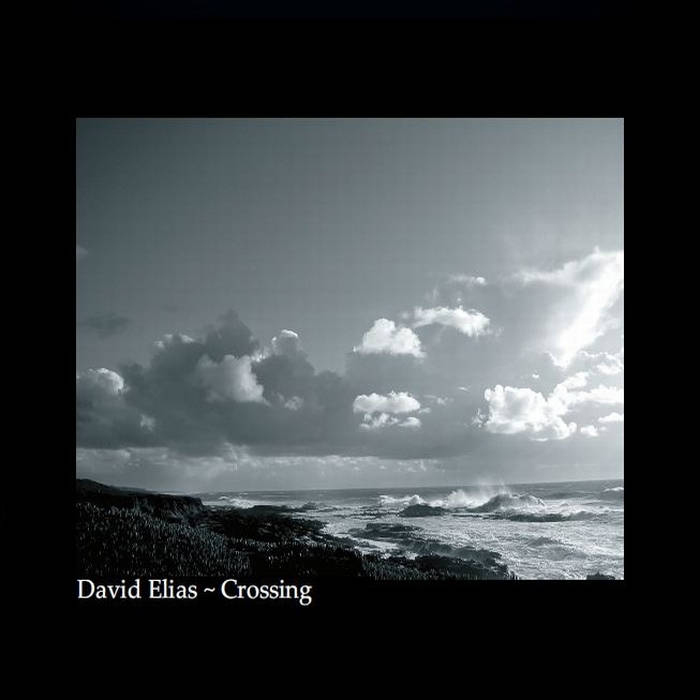
David Elias, “Crossing”
Everything I streamed, whether PCM FLAC files of various resolutions or DSD files, played flawlessly and sounded precisely as I would have expected. I heard no noticeable harshness of any sort nor overly “tubified” softness to the sound either. The MICHI digital section had a nice evenhanded sense of transparency and balance that translated through amplification and allowed whatever speakers were connected to characterize the sound as they would. Playing the DSD file of “Red Tail Guide” from David Elias’s album “The Crossing” sounded properly spacious with the cavernously deep plucking of the double bass effectively rumbling through without obscuring any of the string details. The mandolin in this track is also notable in that the sharpness and purity of its tone (however they managed to capture it in the recording) is such that it will audibly torment a poorly dampened midrange driver, particularly if it’s aluminum. This mirrors David Elias’ vocals which are soft and almost soothing sounding in execution. The song is therefore full of dynamic contrasts which the MICHI allows to come through as completely and successfully as I have ever heard. Thankfully the present company of speakers I had on hand all translated that pesky mandolin properly without inducing any undue wincing or burning of the ears from nasty resonances.
Spying a headphone jack in an integrated amplifier is a welcome sight. As far as I am concerned, they should be a mandatory feature on any integrated amplifier. Unfortunately, you never know whether you will get the benefit of a properly designed head-amp section or just something that was included as an afterthought. Thankfully it looks like the engineers at MICHI didn’t skimp and included a single-ended circuit robust enough that it drove my HIFIMAN HE-1000 V2 and the Dan Clark Audio Stealth headphones cleanly and with plenty of headroom to spare.

Richard Thompson, “13 Rivers”
For example, I loved listening to Richard Thompson’s “The Storm Won’t Come” from his album “13 Rivers.” It has a deep, almost tribal-sounding tom-tom beat that keeps time throughout the song. Between his soft-spoken impassioned lyrics and his guitar playing, along with the occasional accordion and drum fill, the song steadily builds to what I consider probably one of the best modern electric guitar solos that I’ve heard lately. It takes up the last quarter of the song and whenever I hear it, I just turn up the volume to lose myself in it. If I could describe a performance as simultaneously sounding both tasteful and utterly vicious, this would be it. It feels like one is standing defiantly on a large rock in the middle of a raging storm, and all I can say is listening to this track with headphones on the X5 S2 sounds beyond satisfying.
Measurements by Carlo Lo Raso with Analysis by Carlo Lo Raso and David A. Rich.
For THD and frequency response tests, I used my Lynx E22 professional soundcard teamed with SpectraPLUS measurement software. For square wave analysis along with SNR measurements, I used the QuantAsylum QA401 analyzer and its associated software. Other test equipment included my Surface 3 PRO tablet running Room EQ Wizard’s signal generator connected to a Topping D10s USB to SPDIF converter. Its analog and digital output were used for additional phono and digital input tests on the MICHI X5 S2 along with a USB stick preloaded with custom test tones.
Unless otherwise indicated all tests were done at 2 VRMS reference.
The following bench tests cover the preamp, phono, and digital front end of the MICHI X5 S2. As John Johnson Jr. did an exhaustive series of bench tests in his review of the first generation MICHI X5, I have focused my tests more on the digital side of things as that is where most of the updates on the X5 S2 have taken place. Measurements were taken at the RCA Pre-Out jacks. All tone controls, Bluetooth, and HT Bypass settings were disabled during testing. I am not equipped to perform headphone power output or power amplifier tests at this time.
David Rich notes: The measurements for digital and phono were taken at the preamp-out jacks. An issue with the MICHI X5 S2 is that the power amp cannot be muted. As mentioned above, the X5 S2 is gained planned, so the power amp goes to its maximum rating when a 0dBFS signal is applied at the digital input with the volume at 0dBFS. When we try to test the preamp section of this integrated amplifier, the distortion from the power amp section can leak back into the preamp output measurements. The issue becomes more significant at higher test frequencies.
We thus did not show spectra for our distortion tests. The results were excellent, but the ambiguity introduced by the operational power amplifier caused us to decide not to show the spectra.
Carlo is not set up to measure voltages at the power amp output of such a powerful amplifier. Again, please reference John Johnson’s first-generation MICHI X5 review (cited above) for the power amp tests.
Honestly, it is not clear what the preamp-out is used for. We can’t conceive that anyone will upgrade the MICHI X5 S2’s power amp with an external one.
Here are the results for a digital frequency line sweep (USB input to RCA Pre-output) performed at 24-bit/192 kHz. The digital frequency response of the MICHI X5 S2 is essentially flat out to 20 kHz, after which point it is down by 0.5dB at 45 kHz before it begins a gradual roll-off. The response is down by 1dB at 55 kHz, 2dB at 70 kHz, and 6dB at 78 kHz before steeply dropping off.
Here are the results for an analog frequency line sweep (XLR input to RCA Pre-output) performed at 24-bit/192 kHz. The analog frequency response of the MICHI X5 S2 is essentially flat out to 50 kHz, after which point it is down by 0.5dB at 62 kHz before it begins a gradual roll-off. The response is down by 1dB at 75 kHz before steeply dropping off.
The following digital filter test, first suggested by Jurgen Reis of MBL Germany and used by John Atkinson of Stereophile, is designed to give us a look at the type and performance of the digital filter(s) that a given DAC uses. Unique to John Atkinson’s presentation is applying the Reis white noise only in the left channel. In the right channel is a 19 kHz tone. This tone will produce reconstruction spurs if the digital filter is not sharp enough to attenuate them. I’ve also combined the test results with the corresponding square wave that the filter would generate, for comparison. The MICHI X5 S2 offers a single default reconstruction filter.
Rotel seems to have chosen a Minimum Phase filter with a fast roll-off as the only available filter option. The plot shows that we get the first reconstruction tone down by 112 dB (red trace). The passband (yellow trace) is nice and flat past 20 kHz and then the transition band falls quickly. The stopband looks to be at least 80 dB. Quite respectable.
Digital SNR measurements were done using the QuantAsylum QA401 Analyzer. Using a -90 dBFS 1 kHz test signal at the optical input (the volume control was set so the unit produced the 2VRMS reference level for digital products at RCA out), we determined the worst-case digital SNR (A-Weighted) of the MICHI X5 S2 to be 104 dB. Converted to bits that means the MICHI can resolve 17 bits. On the top of the spectrum, you see the SNR of the X5 S2 and then see the signal-to-noise of the left and right channels relative to the -90 dBFS tone (red box). We want the ratio of the full-scale signal to the noise, so we add 90 dB to the red box figure. The SNR is lower than expected, but it matches the Rotel specs.
Here we see the Analog SNR measurement taken from the XLR analog input to the RCA analog output of the MICHI X5 S2. Results show an SNR of 104 dB. The same as the digital SNR. With that figure, we still get a resolution of 17 bits.
David Rich notes: The analog section of the X5 S2 returned the same SNR level as the digital section, indicating that the analog noise dominates.
As explained above, we tested the preamp, setting the volume to 0 dB so it had no electronic gain. The MUSES72320 IC forces the analog electronics to gain unity under these conditions to produce the lowest noise.
The Rotel Mitchi P5 preamplifier, an all-discrete design, is specified at 116 dB SNR with a similar volume control. So, the noise appears to be from the external opamps Rotel uses in the X5 S2 versus those in the P5 preamp.
The above graph shows the relative line linearity performance of the MICHI X5 S2. The architecture shows minimal amounts of deviation beginning at -100 dBFS in level. Significantly larger deviations start occurring at -120 dBFS and continue to increase until -140 dBFS after which the signal gets mired in the noise floor.
David Rich notes: This may not be indicative of the DAC performance, but more the noise of the analog section covering over what comes out of the DAC IC and associated I/V converter.
The Intersample Over Test was inspired by John Siau at Benchmark Media Systems. It consists of using an 11.025 kHz tone with +3.01 dB signal peaks occurring at a phase angle of 45 degrees from the sample clock. This puts the maximum waveform peaks (higher than 0 dB) between the digital samples. According to Siau, “If audio peaks always fell exactly on a sample, there would not be an intersample overload problem. Obviously, musical peaks rarely fall exactly on a sample and most often fall somewhere between samples. This means that most recordings will have peaks that are over 0 dBFS if the highest sample values are just reaching 0 dBFS.” This condition is more prevalent in 16-bit/44 kHz CD recordings and lower bitrate, lossy formats like MP3, and can produce DSP overload problems in DACs.
The above image shows how a textbook DAC should decode the Intersample Over test tone, with no additional noise or spurious tones, showing only the 11 kHz tone.
This is the Intersample Over test result from the MICHI X5 S2. Similar to the reference but with a handful of low-level noise spurs appearing from the noise floor. These spurs would essentially be inaudible, and it is unclear whether they are from the DAC or the residual amp noise.
A Benchmark application note goes into much greater detail with figures.
Here are the RIAA tracking results of both the MM and MC phono stages in the MICHI X5 S2. Note that to perform these measurements we are using a passive inverse RIAA board which introduces about +/- 0.1 dB error from the tolerances of the resistors and capacitors. When using 1 kHz as a reference point, both MM and MC show about 0.2 dB of variation across their respective ranges. This is an excellent performance. Left and Right channel matching for both MM and MC are excellent.
During an online discussion I had with Andrew Jones about how phono stages are measured, he seemed to imply that using an inverse RIAA board, as we used in the measurements above, introduces too much variability in the results. He suggested that measuring RIAA performance by individual frequency test tones was a better way to gauge how tightly a phono stage tracks the RIAA curve. With that in mind, I used 41 frequency test tones that make up the RIAA curve and measured the tracking for both MM and MC. Both appear to be pretty much glued to the target.
David Rich notes: The MICHI X5 S2 uses two active stages in the phono preamp, which accounts for the accuracy shown in the figures. The RIAA preamp is required to produce 60dB of gain. In addition, it has an EQ filter function with two poles and a zero. Using two active stages allows part of the gain to be supplied by each stage. The filter function is also split between the two stages.
Secrets Sponsor
If you are looking for a great-sounding integrated amplifier with ungodly levels of power and build quality that is beyond reproach, audition the MICHI X5 S2 post haste! Well? What are you waiting for?!
- Striking industrial design.
- Built like a brick “you-know-what” house!
- Can power just about any loudspeaker and probably an arc welder or two.
- Excellent sound quality with both analog and digital sources.
- High quality on-board phono stage and headphone amp.
- The Intertek ETL safety lab testing for conformance to UL standards.
- Although expensive, it both looks and feels like it.
- HDMI ARC.
- Amplifier shutdown option when using preamp outputs.
The MICHI X5 S2 integrated amplifier is about as visually and sonically as impressive an audio component as one is likely to find. The additions and refinements added since the original X5 are very much evolutionarily, so if you already own the S1 I don’t see the S2 as some necessary upgrade. Unless you are absolutely dying to have an HT bypass, you already are in excellent stead.
As a control component, its connection resources are thorough and flexible and provide lots of options. The addition of HT Bypass is a nice touch if you are looking to integrate the MICHI into an existing theater system. About the only thing I could ding the X5 S2 on is the lack of an HDMI ARC connection. These are becoming a more common input on components these days and having one would simply round out the MICHI’s dance card, but I doubt its absence is a dealbreaker for most.
As a power component, I honestly can’t think of any conventional loudspeakers that can run off a single stereo amplifier that the X5 S2 couldn’t drive into submission, short of the most obscure and intransigent designs. It is very much a near-bottomless well of great-sounding power that should serve you well through any conceivable speaker situation. I wish the amplifier section could be turned off if one uses the preamp output jacks, as is possible in some AVRs. It looked like some residual noise from the amp section was showing up on many of my preamplifier measurements and while that shouldn’t matter in actual use, any chance to avoid extraneous noise in the preamp outputs would be a good thing. One could argue why you would even want to bother bypassing the amplifier section in this MICHI integrated amp. It is just THAT beastly.
Ultimately, if you’re after one of the biggest, most powerful integrated amplifiers that sounds wonderful and is put together with an almost fastidious level of quality and detail, the MICHI X5 S2 demands your consideration. I don’t see how you could possibly be disappointed.


